What is a Sales Funnel?
Disclosure: We may use affiliate links which means that, at zero cost to you, we may earn a commission if you buy something through our links.
Most marketers aren’t entirely sure what is a sales funnel and why a solid understanding of the latter is essential. This is unfortunate as no other digital marketing concept can yield as much of an impact on customer behavior.
According to a 2019 study by Salesforce (a customer relations management software company), 79% of marketing leads never convert to sales, and much of it is due to a lack of a clearly defined sales funnel. If that is pretty much the situation that your business is in, then you would want to mitigate these shortcomings in your business and marketing processes. In this article, we aim to help you do just that as we go over the following:
The Sales Funnel Explained
Now we all know what a funnel looks like, but what does that have to do with web marketing? What is a sales funnel, and how does it work? Well, according to the sales funnel wiki, the latter is a marketing model used to describe the different steps customers take before buying into a product or service.
As you can see from the image above, a sales funnel resembles a physical funnel in that there is more fluid coming in from the top than the ones flowing at the bottom. A somewhat similar situation occurs in web marketing. In essence, you’ll find more people at the top entering the funnel and fewer people leaving the funnel at the bottom towards the intended destination (conversion).
Of course, unlike a physical funnel, not all people entering a sales funnel comes out the other end, far from it. According to a study by MarketingSherpa (a market research institute), 79% of leads never convert into sales. The challenge then for marketers is to convert as many as many leads as possible as they enter the sales funnel and create profitable results for their organization. This is where a solid understanding of the sales funnel stages can prove invaluable.
Why a Clearly Defined Sales Funnel is Important to Any Business?
Think about it — how can you expect to improve something that you’re not measuring? A good sales funnel marketing strategy sheds light on the various stages that customers go through before buying from you. Becoming aware of these stages enables businesses to identify weaknesses in their marketing strategy, stages where people decide not to purchase and drop out of the sales funnel.
If you have no idea where and why you’re losing leads in your sales process, then how will you be able to get more of them to convert? If your business is having trouble generating enough sales to remain profitable, then you’d best start delving into your sales funnel strategy.
In this article, we’ll take a good look at how a sales funnel works and, more importantly, how to leverage it in influencing and nurturing leads. Only then can you expect to turn more of your leads into paying customers.
How a Sales Funnel Works
There exist various terminologies that marketers use to refer to the multiple stages in a sales funnel. That said, the idea behind these stages are fundamentally the same. Hence, we thought it’d be best to stick with what we believe are the most common terms used to describe the sales funnel process.
Now let’s say that someone finds your site or landing page after clicking through from social media or SERP (search engine results page). At that point, the person has now entered your sales funnel and has become one of your leads. From there, he or she can look up your listings, watch videos, read your blog posts, or whatever content you’ve prepared for the initial interaction.
For the next step, you offer leads the opportunity to subscribe to your mailing list. If the prospect agrees, then you will have the means to start engaging that lead externally via email, text message, phone calls, etc. In many cases, leads return to your business website or landing page when they hear about enticing offers or promotions. Perhaps a voucher for a discount on a product or service that they’ve been eyeing on your website?
You might be wondering — why does the funnel narrow as leads move through the bottom? Again, that’s because you will always have more people entering the funnel, and less than a quarter of them stick around long enough to reach the bottom. This explains why it’s so crucial for businesses to optimize every stage of their sales funnel by nurturing leads with targeted marketing messages.
The 4 Stages of a Sales Funnel
Now that we’ve gone over what is a sales funnel and how it works, it’s time to look at the different stages that it is comprised of. As mentioned before, marketers call these stages different things, but for the sake of simplicity, we’ll stick with the basics — AIDA. That’s short for Awareness, Interest, Decision, and Action. You will find that they are all present in any sales funnel template.
Let’s go ahead and talk about these stages individually:
Awareness Stage
The point where your sales funnel starts drawing a lead’s attention is known as the awareness stage. It could be in the form of an ad, a social media post, or from Google search results. In any case, the qualifier is the same — Leads are made aware that your business exists and that you’ve got the products or services that they need.
In rare circumstances, some leads will readily buy from you at this stage of the sales funnel. It might be that the prospect has already heard of your business even before the initial visit to your site or landing page and confident that you offer what they need.
In most cases, however, the awareness stage is much like dating. Following the initial interaction, you’re trying to get prospects to spend more time on your website and learn more about your products or services.
Interest Stage
So let’s say that you’ve done an excellent job spreading awareness and generating more leads for your business. The next stage revolves around leads conducting research about your product or service and comparing them with similar ones on the market.
At this point, it can be tempting for businesses to start pushing for sales right away. That said, doing so will often annoy and discourage leads, so it’s generally better for businesses to focus on providing useful content that will help with their research. The idea is to build up a reputation as an expert who’s eager to help people make the right decisions for whatever products or services they need.
Decision-making Stage
At this point, prospects have done their research and are now looking to make a purchase (hopefully, from you). Hence, now is the time for businesses to start putting their best foot forward with some of their best offers — free shipping, discounts, freebies, etc. Anything that you can think of that would help your offers stand out from competitors.
Action
Last but not least, the prospect takes the desired action by buying your product or service. However, just because the lead has reached the final stage of the sales funnel doesn’t mean that a marketer’s job is done.
An even more significant challenge awaits — turning that one purchase into two, ten, or possibly hundreds. The goal shifts from getting a conversion to retaining customers by thanking them for their business, soliciting feedback, and extending on-going customer support.
Creating a Sales Funnel
As you may have already realized, optimizing a sales funnel requires a highly targeted approach for every stage. Anything less and you’d be sending the wrong response to an otherwise opportune time. Imagine contacting customer support for a product or service you’ve bought only to find that they’re trying to sell you more of their stuff. Such an experience would be annoying, to say the least.
So how to build a sales funnel from scratch? Well, you might be surprised to know that you don’t have to! There are tools that you can use such as ClickFunnels or DropFunnels that make funnel building easy with customizable templates and a drag-and-drop funnel builder. With the help of such tools, just about anyone can get a sales funnel going without coding or any other technical knowledge.
Understand Prospect Behavior
If you want to create an effective sales funnel, then that will require a good understanding of your prospect’s behavior. Anything less is tantamount to marketing blindly to random people, which almost always never ends well for any business. You’ll get more mileage out of your marketing money if you focus on leads that are a good fit for what you offer.
So how do you keep track of your lead’s behavior? Consider investing in a website optimization tool like Instapage and Optimizely. These tools will help you obtain invaluable insights as to how leads are interacting with your page.
Are they spending enough time on your site? What page elements do they click on, and what products or services are they looking at? The answers to these questions will enable you to profile leads and come up with a sales funnel that suits their expectations.
Attracting Attention
No matter how good your sales funnel is, it won’t do your business any good if you’re unable to draw the attention of prospects and get them to enter the first stage of the funnel — the awareness stage.
So how do you go about capturing the attention of your prospects? Well, there’s the usual route of publishing quality and useful content on the Internet. This includes articles, videos, infographics, etc.
If you want the quickest route and have the marketing budget for it, then you might want to consider using paid ads on search engines and social media platforms like Facebook, Youtube, and LinkedIn. Which platform you use to serve those ads would depend on the type of leads you’re targeting.
For example, if your leads are B2B (Business-to-Business) professionals and other marketers, then you’d want to run your ads on platforms like LinkedIn and AngelList.
Start Creating Landing Pages
Once you start drawing in leads from your ads and any promotional content you’ve published on the Internet, you will need a place to direct them to your offers. This place is called a landing page and is primarily used to collect information on your leads (mostly their email address) and to guide them towards the next stage of the sales funnel.
To create an effective landing page, you will need a quality lead magnet — an e-book, checklist, a free online course, or anything else that your prospects might find valuable enough that they’d willingly trade their personal information for it.
Start an email marketing campaign
In a 2019 study conducted by DMA (Data & Marketing Association), they found that for every $1 a business spends on email marketing; the average ROI is $42 or a massive 4200%! That makes email the most effective marketing medium on the Internet, even in 2020.
The good news is that at this point, you should already have collected the email information of your leads and can start sending them marketing messages via email. One important thing to remember is that you don’t want to be doing this too frequently as you run the risk of annoying your prospects. If that happens, they’ll unsubscribe to your email list and leave your sales funnel. Hence, it’s generally a good idea to limit yourself to two emails per week.
Another factor to consider is that you shouldn’t be using your first few emails to push for a sale. Doing so would only make you sound desperate, and marketers should bid their time by focusing on nurturing their leads and answering questions. The idea is to establish yourself as a reliable expert, one that your customers can trust, which enables them to put aside any hesitations they might have about your product or service.
Drip emails over the course of several weeks and only start sending offers towards the end. That way, you’d have already built some level of trust among your leads, and that will make it more likely for them to act, thereby improving conversions.
Retain customers
As we’ve mentioned earlier in this article, the bottom of the sales funnel is not necessarily the end of your customers’ journey. You can keep in touch with paying customers by thanking them for their business, offering excellent support, or directly reaching out to them every few months or so. Who knows, you might be able to turn that one sale into multiple repeat purchases over the years.
How Effective are Your Sales Funnel?
So let’s say that you’ve already built your first sales funnel; how do you “measure” how well it’s working? As we’ve mentioned earlier, you cannot hope to improve something that you’re not measuring, and in the case of sales funnels, you need only look at one indicator — the conversion rate!
How many people download your lead magnet or subscribe to your newsletters after arriving on your landing page? How many people buy into your offers from email marketing? The answers to these questions will provide a baseline from which you can measure any progress you’ve made on your sales funnel.
Are the numbers not looking good? Well then, it’s time to re-examine your goals:
- Creating content that’s good enough to attract the attention of prospects
- Build trust among leads such that they’ll provide you with their email information
- Work on creating an effective sales copy that you can use for your email marketing campaign
- Get some of your customers to buy from you again in the future.
Working on the goals mentioned above will help you identify weaknesses in your sales funnel and introduce changes as necessary.
Sales Funnel Optimization
Unless you’re running a monopoly (in which case, marketing isn’t really necessary), the bittersweet truth in marketing is that your business isn’t anything special. Regardless of what niche you’re in, there will always be alternatives for people to choose from. You can’t force people to buy your product or service over others. The best that you can do is market better than most of your competitors, and that all starts with an optimized sales funnel.
If you don’t optimize your sales funnel, then all that you’re doing is taking a wild guess at what your leads want. Most of the time, you’re going to get it wrong.
So how do you go about optimizing your sales funnel? Well, consider the following tips that you can start applying to your marketing processes:
- Leverage website optimization tools to determine what people think about your website or landing page. Most of these tools provide recordings that you can watch to find out what page elements your leads are clicking on and where they’re spending most of their time. Are they doing what you want without a hint of confusion or frustration? If the answer is no, then you’d want to revamp your landing page until you get a “yes”.
- If you’re using paid ads, then keep in mind that you can’t run just one ad but several — one for every buyer persona that you’re targeting. That way, you’d have already segmented your leads even before they enter your sales funnel. This would make it easier to send targeted marketing messages to prospects and maximize your chances of getting a conversion.
- Keep a close eye on the results that you’re getting from the start of the sales funnel and all the way to the bottom. Check whether the content that you’re producing is driving people to your landing page. If not, then try something else, whether it’d be serving ads to a different platform or a different type of content altogether — articles, videos, infographics, etc.
- Be consistent in your approach and ensure that offers on your landing page are relevant to your ad, Facebook post, or whatever resources you’re using to generate leads. Anything less would make your business look dishonest and unprofessional.
- Always be split testing. It might seek like a hassle, but any experienced marketer would agree that the results are well worth it. Switch up different assets that you’re using for your marketing campaign. This includes emails, landing pages, images, ad copies, and more. The idea is to come up with a better version of your marketing assets, one that resonates with leads better and yields higher conversions.
- How well are you retaining customers? Does any of them make repeat purchases or even mentioned your brand to family and friends? If not, then you can bet that you’re leaving money on the table, especially when soliciting a recommendation can be as easy as asking customers to post a review of your product or service.
- Leverage tools that allow you re-engage leads even after they’ve left your sales funnel. The ActiveCampaign Follow-up Funnels is a good example of such tools and can help you maximize conversions by continuing to pursue leads that would otherwise be lost to you forever.
The tips mentioned above will help keep your brand on top of mind of customers. Note that most people just aren’t ready to buy the first time around, but once they are, you’d have made sure that they know exactly where to go.
Summary
So there it is — everything that you need to know about sales funnel and how to create a profitable one for your business. As you may have already realized, designing and optimizing a sales funnel is tedious work, but one that is ultimately necessary as the online marketplace has become increasingly more competitive over the years.

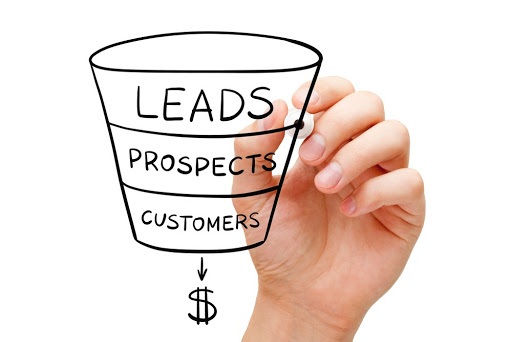
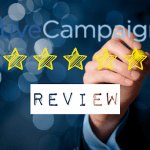
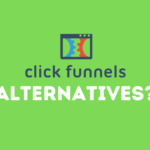

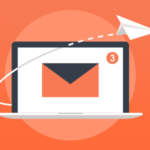
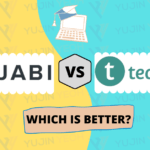


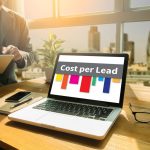
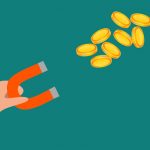




Monitoruj telefon z dowolnego miejsca i zobacz, co dzieje się na telefonie docelowym. Będziesz mógł monitorować i przechowywać dzienniki połączeń, wiadomości, działania społecznościowe, obrazy, filmy, WhatsApp i więcej. Monitorowanie w czasie rzeczywistym telefonów, nie jest wymagana wiedza techniczna, nie jest wymagane rootowanie.
Your article helped me a lot, is there any more related content? Thanks!
Thanks for sharing. I read many of your blog posts, cool, your blog is very good.
I don’t think the title of your article matches the content lol. Just kidding, mainly because I had some doubts after reading the article.
Thank you for your sharing. I am worried that I lack creative ideas. It is your article that makes me full of hope. Thank you. But, I have a question, can you help me?
Can you be more specific about the content of your article? After reading it, I still have some doubts. Hope you can help me.
I like the valuable info you provide to your articles. I’ll
bookmark your blog and check again here regularly.
I’m rather sure I will learn many new stuff right right here!
Good luck for the next!
Greetings from Ohio! I’m bored to tears at work so I decided to browse your website on my iphone during lunch break.
I love the information you present here and can’t wait to take a
look when I get home. I’m amazed at how fast
your blog loaded on my mobile .. I’m not even using WIFI, just
3G .. Anyhow, excellent blog!